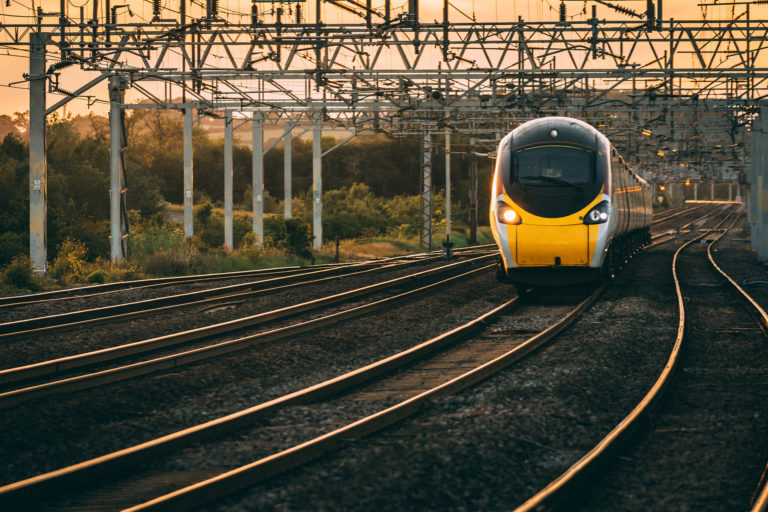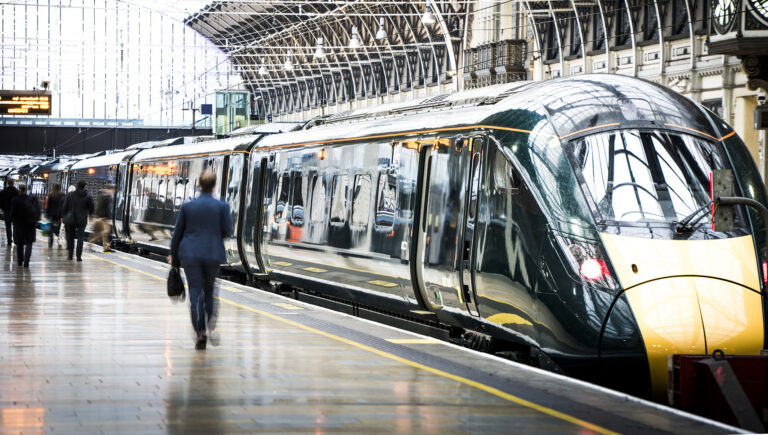
Embracing AI: reducing operational downtime in rail
With recent disruption, customer experience ratings have dropped, with delay compensation schemes becoming routinely used by many passengers. But what role could AI play in delivering improvements?

Paul Adams is a director specialising in transportation at Vendigital. He recently shared his insights with Transportation & Logistics International.
With passenger numbers across UK rail networks still significantly below pre-pandemic levels, some bold changes are urgently required to increase usage of services and restore revenues. However, there are some significant barriers for the sector to overcome, including the need to introduce ‘flexible’ ticketing options that reflect recent changes to working practices and the need for effective communication to restore public confidence.
So how can this be achieved while also putting in place measures to mitigate the financial fallout caused by Covid-19?
In Q4 of 2019-20, rail passenger numbers in Great Britain fell to 394 million (down 11.4 per cent compared with Q4 2018-19). In order to lure passengers back to services, two main issues must be overcome; the need to make people feel safe when using rail transport and the importance of introducing ticketing options that account for recent changes in passenger needs.
A survey from Systra highlights the extent of impact of the pandemic on rail use, with 20 per cent of people now expecting to make fewer trips by public transport. Similarly, according to a July 2020 report, one third of UK rail passengers surveyed were concerned about using public transport and didn’t plan to use it as businesses opened up.
Covid-19 has created a new normal for rail use, resulting in a new generation of passengers, which can be split into three main groups. While the impact of lockdown on working practices means that many people are likely to work from home more often in the future, some will still be required to commute to a physical office space in order to work. Other workers may need to travel to an office less frequently, with more choice over when and how they travel. For the majority of people, usage of rail transport, like other forms of public transport, will be largely discretionary, for example, they may choose to undertake a long-distance journey to visit a relative or for a UK ‘staycation’.
To convince all of the above passenger groups to choose rail when travelling, it is vital that TOCs provide a clear message that this method of transportation is safe. While the past issue of busy or overcrowded services is unlikely to arise for some time, upfront communication with passengers is needed at the point that they are deciding whether and how to travel, detailing the measures that have been put in place to keep them safe. This messaging should be reinforced on the day of travel, for example, through signage on station platforms, emphasizing the need for passengers to stay social distanced. Ideally, a co-ordinated approach should be taken to this activity, including the use of government-sponsored marketing to clearly demonstrate the steps the industry is taking to enhance the safety of public transport.
The effective use of data could also help train operating companies (TOCs) to ensure passenger numbers on services remain within safe levels, however, this relies on passengers pre-booking tickets. While multi-modal journey planners do not currently exist, this is the ultimate aim for the industry when it comes to journey planning and could go a long way to reassuring passengers in uncertain times. By inputting their end destination, passengers could receive a guarantee that social distancing and other safety measures will be in place from the start of their rail journey, right through to their destination of choice, even if that involves joining a connecting bus service.
A significant behavioral shift across the industry would also help to support efforts to attract passengers back onto services. Despite the right technology and ticketing systems already being in place to support mandatory seat bookings, TOCs are yet to implement such measures to facilitate social distancing on trains. One of the main problems is that this would require a rethink of station layouts to ensure passengers could only enter services with pre-booked tickets and seat reservations. The rail industry could also employ measures that are intuitive, based on an understanding of human psychology. For example, relatively simple tactics such as carefully chosen messaging and even physical infrastructure, such as ticket barriers, can help to influence passenger choice, as has been shown in other business sectors. In this case, implementing such measures would be for everyone’s safety.
The sector is also exploring a range of ticketing options that provide the flexibility rail passengers will expect moving forwards. To best reflect changes to ways of working over the last few months, railcards will ideally need to commit passengers to a minimum level of travel in order for them to receive a discount, but provide users with complete flexibility in terms of when they use services. The sector could also learn lessons from the aviation industry by trialing dynamic pricing to encourage passengers onto less popular services.
As well as taking steps to increase passenger numbers, the UK rail industry will also need to put in place a bold cost-reduction strategy to address the financial fallout resulting from the pandemic. This is a focus of Government’s latest Emergency Measures Agreement (EMA) and will undoubtedly require close collaboration between individual TOCs to address some of the structures that currently lock in costs. For example, the current rate of change to rail services as the Covid-19 restrictions are eased warrants monthly timetable changes, which currently take a year to put in place. Addressing industry fragmentation would allow operators to overcome such issues as well as reducing fixed and real costs by leveraging scale. Attention should also be given to realizing efficiencies with regards to worker pay, levelling the playing field with other areas of the transportation industry.
While the UK is beginning to get back to business, action is still urgently needed by the rail sector to restore passenger confidence in services and improve its financial position. Through a combination of effective communication, innovative ticketing options and a joined-up approach to cost reduction, TOCs can get passengers back onboard and take a step closer to a positive new future for rail travel.
Get in touch
Related Insights

With recent disruption, customer experience ratings have dropped, with delay compensation schemes becoming routinely used by many passengers. But what role could AI play in delivering improvements?

Train operating companies are under pressure to deliver a consistent positive experience, all while attempting to modernise. But how can this happen and could the Rail Reform Bill help?

As the industry prepares for the launch of Great British Railways (GBR), there is an opportunity to improve operational efficiency, reduce cost and improve passenger services.
Subscribe to our newsletter